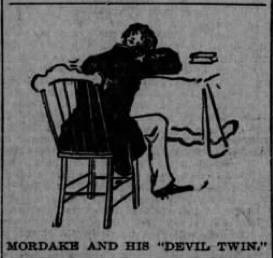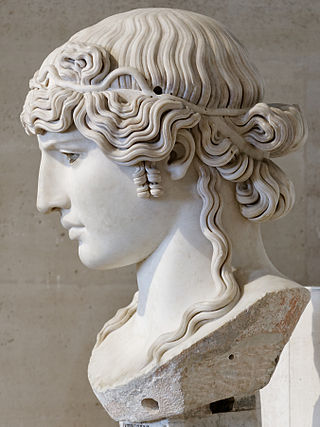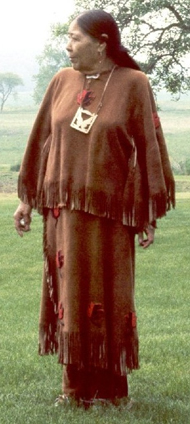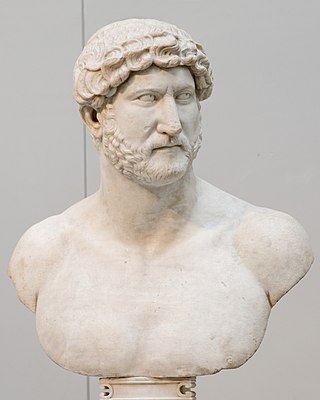Explorations
| | This section is empty. You can help by adding to it. (July 2010) |
| |||
|---|---|---|---|
| +... | |||
Below are notable events in archaeology that occurred in 1856.
| | This section is empty. You can help by adding to it. (July 2010) |
| | This section is empty. You can help by adding to it. (July 2010) |
| | This section is empty. You can help by adding to it. (July 2010) |
| | This section is empty. You can help by adding to it. (July 2010) |

Antinous, also called Antinoös, was a Greek youth from Bithynia and a favourite and lover of the Roman emperor Hadrian. Following his premature death before his 20th birthday, Antinous was deified on Hadrian's orders, being worshipped in both the Greek East and Latin West, sometimes as a god and sometimes merely as a hero.

Sir Edward Burnett Tylor was an English anthropologist, and professor of anthropology.

Eleutherian College, founded as Eleutherian Institute in 1848, was a school founded by local anti-slavery Baptists at Lancaster in Jefferson County. The institute's name comes from the Greek word eleutheros, meaning "freedom and equality." The school admitted students without regard to ethnicity or gender, including freed and fugitive slaves. Its first classes began offering secondary school instruction on November 27, 1848. The school was renamed Eleutherian College in 1854, when it began offering college-level coursework. It closed in 1874 and its main building was used for a private normal school and then a public high school. It is now home to a non-profit group. The school was the second college in the United States west of the Allegheny Mountains and the first in Indiana to provide education to students of different colors. The restored three-story stone chapel and classroom building was constructed between 1853 and 1856 and presently serves as a local history museum. The school was listed on the National Register of Historic Places in 1993 and declared a National Historic Landmark in 1997,

Sascab is a naturally occurring mineral material described variously as "decomposed limestone", "breccia", and "the lime gravel mixture the Maya used as mortar." It has been used as a building and paving material in Mesoamerica since antiquity. In the context of pottery the term may also apply to mixtures of a more finely divided form of the same material.
Below are notable events in archaeology that occurred in 1901.
Below are notable events in archaeology that occurred in 1900.
Below are notable events in archaeology that occurred in 1904.

Edward Herbert Thompson was an American-born archaeologist and long-time consul to Yucatán, Mexico.
Below are notable events in archaeology that occurred in 1935.

Edward Mordake is the apocryphal subject of an urban legend who was born in the 19th century as the heir to an English peerage with a face at the back of his head. According to legend, the face could whisper, laugh or cry. Mordake repeatedly begged doctors to remove it, claiming it whispered bad things to him at night. Mordake died by suicide at the age of 23.

The Royal Anthropological Institute of Great Britain and Ireland (RAI) is a long-established anthropological organisation, and Learned Society, with a global membership. Its remit includes all the component fields of anthropology, such as biological anthropology, evolutionary anthropology, social anthropology, cultural anthropology, visual anthropology and medical anthropology, as well as sub-specialisms within these, and interests shared with neighbouring disciplines such as human genetics, archaeology and linguistics. It seeks to combine a tradition of scholarship with services to anthropologists, including students.

The American Numismatic Society (ANS) is a New York City-based organization dedicated to the study of coins, money, medals, tokens, and related objects. Founded in 1858, it is the only American museum devoted exclusively to their preservation and study. Its collection encompasses nearly one million items, including medals and paper money, as well as the world's most comprehensive library of numismatic literature. The current president of the society, Dr. Ute Wartenberg, served as the executive director for two decades and was succeeded in this role by Dr. Gilles Bransbourg.
Below are notable events in archaeology that occurred in 1866.

The Antinous Mondragone is a 0.95-metre high marble example of the Mondragone type of the deified Antinous. This colossal head was made sometime in the period between 130 AD to 138 AD and then is believed to have been rediscovered in the early 18th century, near the ruined Roman city, Tusculum. After its rediscovery, it was housed at the Villa Mondragone as a part of the Borghese collection, and in 1807, it was sold to Napoleon Bonaparte; it is now housed in the Louvre in Paris, France.

The Antinous Farnese is a marble sculptural representation of Antinous that was sculpted between 130 and 137 CE. Antinous was the lover to Roman Emperor Hadrian; the emperor who, after Antinous's death, perpetuated the image of Antinous as a Roman god within the Roman empire. This sculpture is a part of the Roman Imperial style and was sculpted during a revival of Greek culture, initiated by Hadrian's philhellenism. Its found spot and provenance are unknown, but this sculpture is currently a part of the Farnese Collection in the Naples National Archaeological Museum.

Nora Thompson Dean, from Dewey, Oklahoma, was a member of the Delaware Tribe of Indians. As a Lenape traditionalist and one of the last fluent speakers of the southern Unami dialect of the Lenape language, she was an influential mentor to younger tribal members and is widely cited in scholarship on Lenape /luh-NAH-pay/ culture.

Hacienda Chichén is located within the ancient Maya city of Chichen Itza, in the county of Tinum, Yucatán, Mexico. It was one of the first haciendas established in Yucatán and was in ruins by 1847. Edward Herbert Thompson, U.S. consul in Yucatán, purchased Hacienda Chichén, including the archaeological site visited today in 1894. He excavated, explored and exported goods from the site to the Peabody Museum for over 3 decades. In 1926, he was charged with trafficking of antiquities but the charges were later dropped and his heirs sold the site. The purchaser, Fernando Barbachano Peon is credited with beginning the tourism industry of Yucatán and being the first hotelier to change a hacienda into a hotel.

A bust of Hadrian, the second-century Roman emperor who rebuilt the Pantheon and constructed the Temple of Venus and Roma, was formerly displayed in Pope Sixtus V's Villa Montalto and is now displayed at the British Museum in London. The bust is one of the Townley Marbles collected by Charles Townley (1737–1805) and sold by his heir Peregrine Edward Towneley at a reduced price to the British Museum in 1805. Unlike most busts of Hadrian and other emperors, it shows him in heroic nudity. The bust was found in Rome and is carved from Greek marble.
The Roberts Island complex is an archaeological site in Citrus County, Florida, near the Gulf of Mexico, dating from the late Woodland period. It is located on an island in the Crystal River midway between the springs at the head of the river and the mouth of the river on the Gulf of Mexico. The site is a geographically separate unit of the Crystal River Archaeological State Park. The site includes three shell mounds and three middens. Two of the mounds may have had stepped sides. The Roberts Island complex was developed as the Crystal River site declined and most other ceremonial sites in the region were abandoned during the 7th or 8th century.

The bust of Antinous in the National Archaeological Museum, Athens in Greece is an ancient Roman sculptural portrait of the young Antinous, the favorite and beloved of the Roman emperor Hadrian. It was discovered in the city of Patras in the nineteenth century.